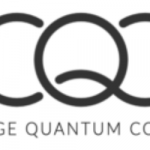Qubits in Hyperchaos a Breakthrough in Quantum Cryptography
(By Becky Bracken) As it stands, there isn’t enough computing power available to study large-scale quantum systems, like those required for quantum cryptography. A group of physicists have just published a paper on what they think is the solution: Hyperchaos Phenomenon.
“As full-scale quantum computing on a true quantum computer is not available yet, the bottleneck is that only small-scale quantum computers, up to dozens of qubits, can be simulated using classical supercomputers,” Dr. Weibin Li, from School of Physics and Astronomy, Nottingham University, who worked on the new research said.
Dr. Li joined with a team assembled from Loughborough and Nottingham and Innopolis universities who report in their article, Emergence and control of complex behaviors in driven systems of interacting quibits with dissipation that qubits excited by a laser eventually enter a state called “hyperchaos” which remained steady as the system was expanded.
Critically, the hyperchaos can be controlled and observed. The ability to control large-scale quantum systems could be a major advance in the race to create new quantum cryptography tools, the report said.
“Here, full control and characterization of quantum computers is the key to performing correct and massive computing,” Dr. Li added. “In the quantum realm, the number of degrees of freedom of a system grows exponentially with its size.”
Fellow author of the report Dr. Alexandre Zogoskin from Loughborough’s School of Science related the Hyperchaos Phenomenon finding to early airplane builders who didn’t have computers available for complex aerodynamics calculations but were still able to observe a smaller set of data to reach the goal of flight.
Orville and Wilbur Wright didn’t hold advanced degrees in engineering, after all.
“In order to design an aircraft, it is necessary to solve certain equations of hydro(aero)dynamics, which are very hard to solve and only became possible way after WWII, when powerful computers appeared,” Dr. Zogoskin said. “Nevertheless, people had been designing and flying aircraft long before that.”
The team is hoping by exciting qubits into hyperchaos the development of large-scale systems won’t be frustrated by a lack of computing power.
“Without this, direct simulation of a quantum system in all detail, using a classical computer, becomes impossible once it contains more than a few thousand qubits,” Dr. Zogoskin explained. “Essentially, there is not enough matter in the Universe to build a classical computer capable of dealing with the problem.”
The next step will be to build, and test scale models created from qubits excited into their hyperchaos state.
Dr. Zogoskin explained the discovery in sheer numbers, “If we can characterize different regimes of a 10,000-qubit quantum computer by just 10,000 such parameters instead of 2^(10000) – which is approximately 2 times a 1 with three thousand zeros – that would be a real breakthrough.”



















